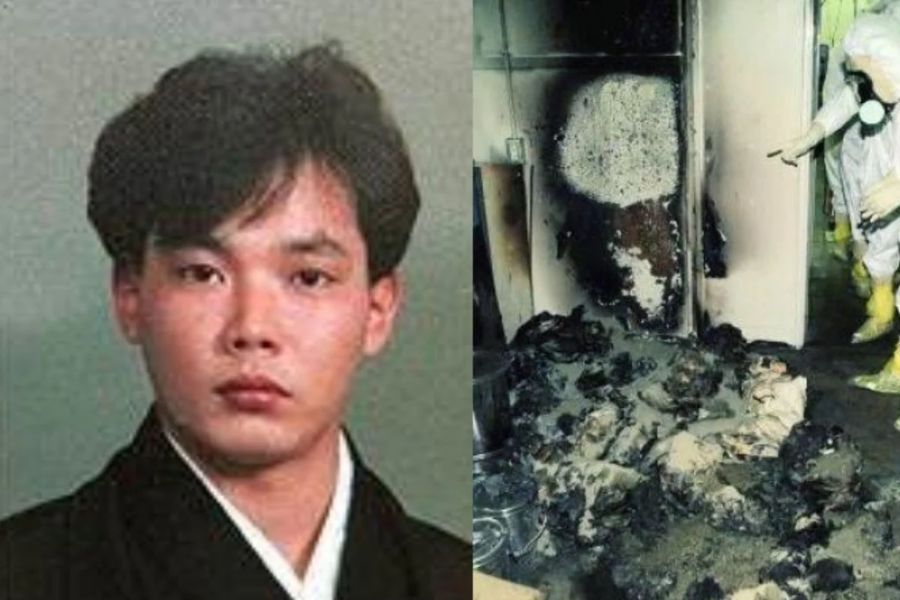Understanding Hisashi Ouchi's Face: The Story Behind The Tragic Incident
Hisashi Ouchi's face has become a symbol of one of the most tragic accidents in the history of nuclear safety. This incident not only highlights the dangers of nuclear energy but also raises questions about the safety protocols in place within such facilities. In this article, we will delve deep into the life of Hisashi Ouchi, the events leading up to the accident, and its aftermath. We will also explore how this tragedy has impacted nuclear safety regulations and public perception of nuclear energy.
Hisashi Ouchi was a dedicated worker at the Tokaimura nuclear facility in Japan. On September 30, 1999, a criticality accident occurred due to a series of human errors and inadequate safety measures. This incident not only claimed the life of Ouchi but also left him with severe injuries that would haunt him for the rest of his life. Through this article, we aim to honor his memory while shedding light on the lessons learned from this unfortunate event.
As we navigate through this complex topic, we will also address the broader implications of nuclear energy and the importance of proper training and safety protocols. The story of Hisashi Ouchi serves as a poignant reminder of the human cost of negligence in industries that handle potentially hazardous materials.
Table of Contents
- Biography of Hisashi Ouchi
- The Incident: What Happened?
- Aftermath and Medical Treatment
- Impact on Nuclear Safety Regulations
- Public Perception of Nuclear Energy
- Lessons Learned from the Tragedy
- Conclusion
- Sources
Biography of Hisashi Ouchi
Hisashi Ouchi was born on March 18, 1960, in Japan. He grew up in a modest family and developed a keen interest in science and technology from an early age. Ouchi pursued a career in nuclear engineering, believing in the potential of nuclear energy to provide clean and efficient power. By the time of the incident, he was a technician at the Tokaimura nuclear facility.
| Personal Information | Details |
|---|---|
| Name | Hisashi Ouchi |
| Date of Birth | March 18, 1960 |
| Occupation | Nuclear Technician |
| Incident Date | September 30, 1999 |
| Place of Incident | Tokaimura Nuclear Facility, Japan |
The Incident: What Happened?
The tragic incident involving Hisashi Ouchi occurred due to a series of critical errors during the handling of uranium. Workers at the facility were attempting to create a mixture of uranium and nitric acid to produce fuel for the nuclear reactor. However, they bypassed several safety protocols, which ultimately led to a criticality accident.
The Sequence of Events
- September 30, 1999: Workers began mixing uranium without proper oversight.
- Criticality accident occurs when the uranium achieves a supercritical state.
- Radiation was released into the environment, exposing the workers to lethal doses.
- Hisashi Ouchi was one of the most severely affected, suffering from acute radiation syndrome.
Aftermath and Medical Treatment
Following the accident, Ouchi was rushed to the hospital where he received extensive medical treatment. His condition was dire, and he was subjected to numerous blood transfusions and other treatments to counteract the effects of radiation exposure. Unfortunately, the severity of his injuries meant that he faced a long and painful battle for survival.
Medical Challenges
- Ouchi suffered severe burns and radiation damage to his internal organs.
- He experienced significant pain and required constant medical care.
- Despite efforts to save him, Ouchi succumbed to his injuries on December 21, 1999.
Impact on Nuclear Safety Regulations
The tragic fate of Hisashi Ouchi prompted a reevaluation of nuclear safety protocols in Japan and around the world. The incident exposed significant flaws in safety procedures and led to stricter regulations aimed at preventing similar accidents in the future.
Changes Implemented
- Increased training for nuclear facility workers.
- Enhanced safety protocols to be followed during hazardous operations.
- Regular audits and inspections of nuclear facilities to ensure compliance.
Public Perception of Nuclear Energy
The accident at Tokaimura had a profound impact on public perception of nuclear energy in Japan. Many citizens began to question the safety of nuclear power plants and the government's ability to manage such facilities effectively. The incident fueled anti-nuclear sentiment and led to widespread protests against nuclear energy.
Long-term Effects
- Increased advocacy for renewable energy sources.
- Stricter regulations on nuclear energy operations.
- Public demands for transparency regarding nuclear safety measures.
Lessons Learned from the Tragedy
The story of Hisashi Ouchi serves as a cautionary tale about the importance of safety in industries dealing with hazardous materials. Several key lessons can be drawn from this tragic incident:
- Importance of adhering to safety protocols.
- Need for thorough training programs for all personnel.
- Continuous evaluation and improvement of safety measures.
Conclusion
In conclusion, the tragic story of Hisashi Ouchi highlights the critical importance of safety in the nuclear industry. The lessons learned from this incident have led to significant improvements in safety protocols and have shaped public perception of nuclear energy. As we remember Hisashi Ouchi, we must also commit to ensuring that such a tragedy never happens again.
We encourage readers to share their thoughts on this incident and its implications for nuclear safety and energy. Please leave your comments below or share this article with others who may find it informative.
Sources
Exploring Frankie Muniz's Life And Fatherhood Journey: 13 Kids And Counting
Lana Del Rey Ethnicity: Understanding The Roots Of A Musical Icon
Gypsy Rose Crime Photos: A Deep Dive Into The Controversy And Tragedy


